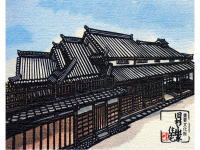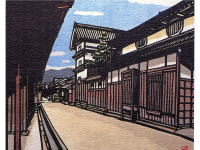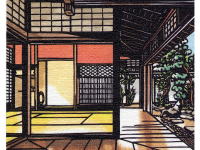富田林寺内町の探訪
I'm glad to intorduce an old town, Jinaimachi, Tondabayashi, Osaka, Japan as a national historic district and heritage site.
It takes 30 minutes from Osaka city to Tondabayashi station by Kintetsu railways. A 10-minutes walk will take you to the historic town.
ギャラリー
residence of the ishida Family - former sake brewery of banri-no-haru
| 【Tourist guide to Jinaimachi town, Tondabayashi, a historic district and heritage site of Japan, Residence of the Ishida family - former Sake brewery of Banri-no-Haru】 | ||||
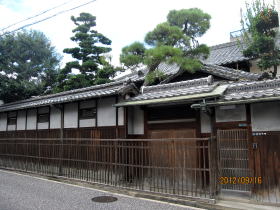 the residence faces Sakai-suji street |
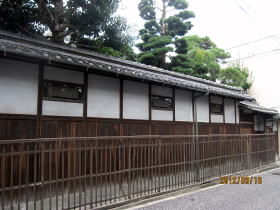 the residence faces Sakai-suji street |
|||
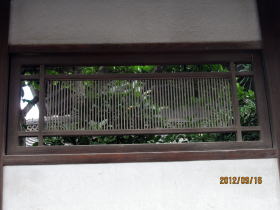 a lattice window |
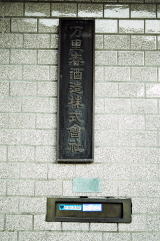 The corporate name plate "Banri-no-Haru sake brewery Co. ltd." is still being left |
|||
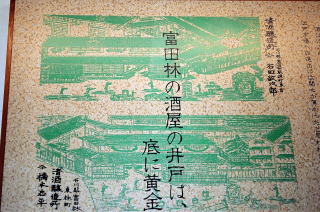 The brewery of the Ishida family was drawn on the picture(upper) |
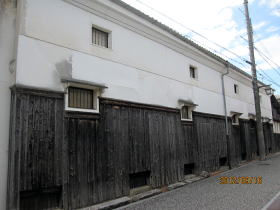 sake brewery storehouse faces Minami Kaisho-cho street |
|||
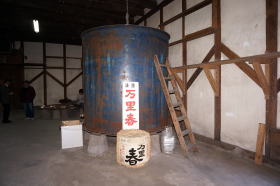 The interior of the former sake brewery storehouse of Banri-no-Haru |
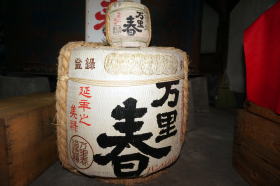 sake cask of Banri-no-Haru brand |
|||
| The interior of the former sake brewery storehouse of Banri-no-Haru was specially opened to the public when the 8th Autumn Dolls Festival was held in Tondabayashi Jinaimachi on Saturday, October 11, 2014. | ||||
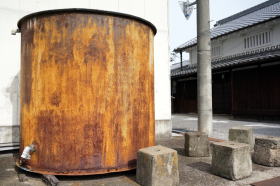 |
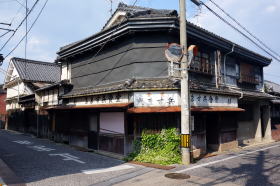 |
|||
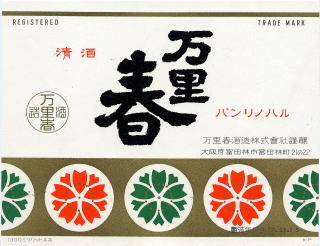 Banri-no-Haru brand label(for the first class sake、sticked to the body of bottle) |
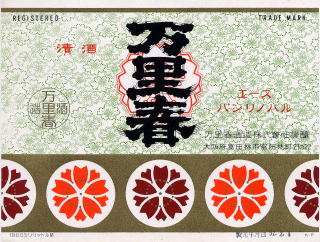 Banri-no-Haru brand label(for the second class sake, sticked to the body of bottle) |
|||
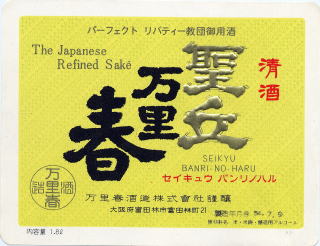 Banri-no-Haru brand label(for the super class、sticked to the body of bottle、limited sales edition) |
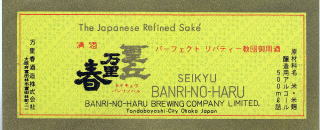 Banri-no-Haru brand label(for the super class、sticked to the body of bottle、500ml bottle, limited sales edition) |
|||
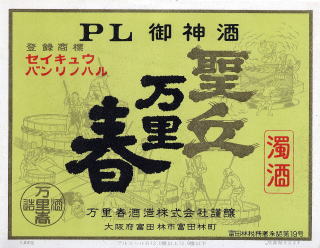 Banri-no-Haru brand label(for unrefined sake、sticked to the body of bottle、limited sales edition) |
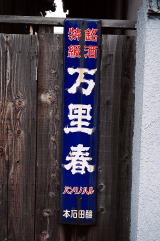 the old-fashioned enamel plate advertisement "Banri-no-Haru" |
|||
| Mochiokuri (Corelling) In order to support the part that protrudes, such as bay windows and eaves (sunshade), the diagonal wooden member or wooden plate to be attached to the wall or a pillar. Inu-yarai It is thought that the fence established in the front of a house in the town, was formerly supposed to be tied with oxen and horses carrying articles, but becomes intended to prevent that a person enters the under the eaves today. |
||||
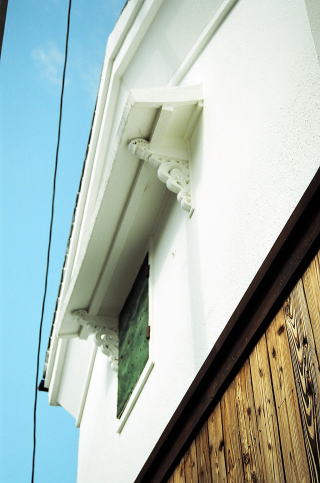 the storehouse faces Sakai-suji street the window on the second floor and Mochiokuri with plaster coated |
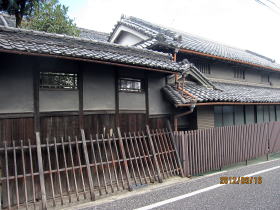 the residence faces Sakai-suji street The branch family ran brewery of soy sauce. |
|||
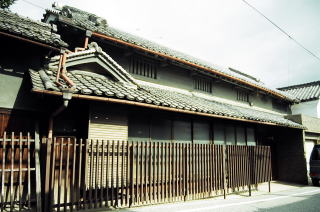 |
||||
| Zushi-Nikai or Tsushi-Nikai The second floor with a low ceiling, which is seen on plastered wall of farmhouses found in Kansai region. Mushikagomado (Mushikomado) The second floor windows with a plastered grid on the plasterer wall of buildings. It is believed to have developedthrough the vent holes of the second floor with low ceiling. There are also often used in townhouses, and some are in shape of patterns and trademarks. The earthenware doll as Talisman against evil (Shouki-san as the devil-queller) Shouki-san, or Zhong Kui is a legendary God of the talisman named after the Story of China that managed to scare off demons that cause epidemics that had clung to Tang Dynast Xuanzong in China. |
||||
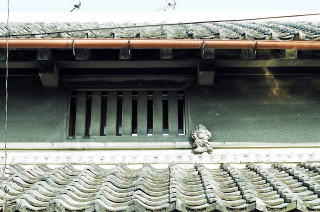 Tsushi Nikai and Mushikomado window (branch family of the Ishida family) |
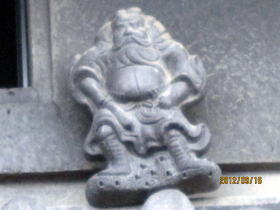 Shokisan doll as a talisman put under the eave of the entrance |
|||
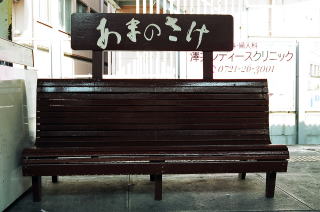 The old-fashioned wooden bench used to be placed on the platform at Kawachi Nagano station of Kintetsu Railway terminal with the advertisement of locally famous brand Amano-sake The same design of wooden benches painted in the same dark brown color were placed on the platform No.1 at Tondabayashi station of Kintetsu Railway with the advertisement of locally famous sake brand Banri-no-Haru. |
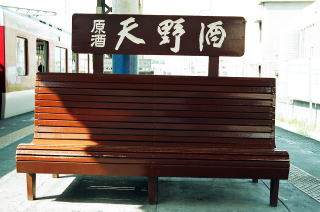 チThe old-fashioned wooden bench used to be placed on the platform at Kawachi
Nagano station of Kintetsu Railway terminal with the advertisement of locally
famous brand Amano-sake チThe old-fashioned wooden bench used to be placed on the platform at Kawachi
Nagano station of Kintetsu Railway terminal with the advertisement of locally
famous brand Amano-sake(the photo was taken on May 7, 2004) |
|||
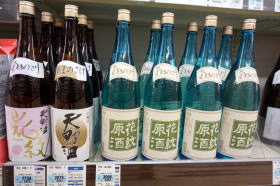 locally famous brand Amano-sake in Kawachi Nagano district |
||||
|
||||
Information

Not open to the public
(private residence)
Year built:
The early Meiji era
Location:
At the intersection of Higashi suji and Sakai-cho street in Jinaimachi
town.
History (Origin)
The Ishida family, drawn on the illustrated map in the picture (right),
started sake liquor brewing as the brewing stock (production license) was
distributed from the Sugiyama family and the Nakamura family to the family and they moved from East Itamochi of the neighborhood to
Tondabayashi Jinaimachi in the Meiji period. The storehouse for brewing
sake liquor was dismantled from the residence of Sugiyama family and reconstructed at the premises of the Ishida family, which had existed
until around 1976 or 1977 and was demolished due to intense damages of
the building.
The Ishida family solely ran the sake brewery for the wartime and after
the war as well, though the local brewing business almost discontinued
before and after the economic crisis of the early Showa era. (1930-31)
The brewery was used as storage tank manufacturing factory for military
use at the wartime.
In brewing at that time, brewing rice all over the country including "Yamada
Nishiki rice” produced in Hokuriku region and “500 Mangoku rice"
produced in Oumi region were used as raw materials, and a chief brewer
called Touji and skilled workers in brewing sake called Kurando from Tajima
district were engaged every year during a period from November in winter
until early April in the next year. The annual production quantity at the golden age after the war amounted
to 2,000 koku units equivalent to 200,000 bottles by sho equivalent to
0.477 U.S. gallon and they wholesaled it with a tanker to "Gekkeikan"
of Fushimi, Kyoto by pail selling.
The family produced the banri-no-Haru brand as sweet local famous sake
and it was a warehouse distributor who was able to continue selling it
in Minami Kawachi region and Osaka city, but unfortunately the family discontinued
its business around 1982-83.
Features of the buildings
The big storehouse for sake brewery constructed in the Meiji era still
matches into the scenery of historic townscape and the prosperity of the
brewing business at that time can be remembered.
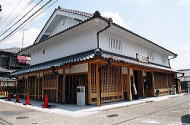
Visitor Center
(Jinaimachi Kouryuukan,
Town Community Center)
Address
9-29, Tondabayashi-cho, Tondabayashi city, Osaka, 584-0033, Japan
TEL.+81-(0)721-26-0110
FAX.+81-(0)721-26-0110
open 10a.m. until 5 p.m.
closed on Monday
The site-seeing map
available in English. Please stop by to the Tourist Information Cetnter
or Jinaimachi Visitor Center.
Restrooms
Available at Jinaimachi Visitor Center (Jinaimachi Kouryuukan), Jinaimachi
Center and Jinaimachi Tenbou Hiroba (Viewing Terrace)
Visitor Parking
Road width is very narrow in Jinaimachi town. If traveling by car, please
use Tondabayashi Municipal east parking newly opened in February 2014 (Toll
parking).
You can park the minibus for groups and passenger cars for general use.
Only one parking lot available for minibus, you must book it in advance
with Tondabayashi City Hall. A 15-minute walk to the Jinaimachi Visitor
Center and 5 minute walk up to the former Sugiyama family house, an important
national cultural property.
You will note that you will contact Tondabayashi Municipality Office for
a parking lot of large tourist bus for groups. Thank you in advance for
your kind cooperation.
